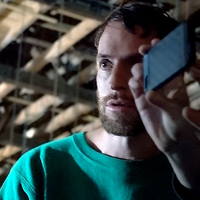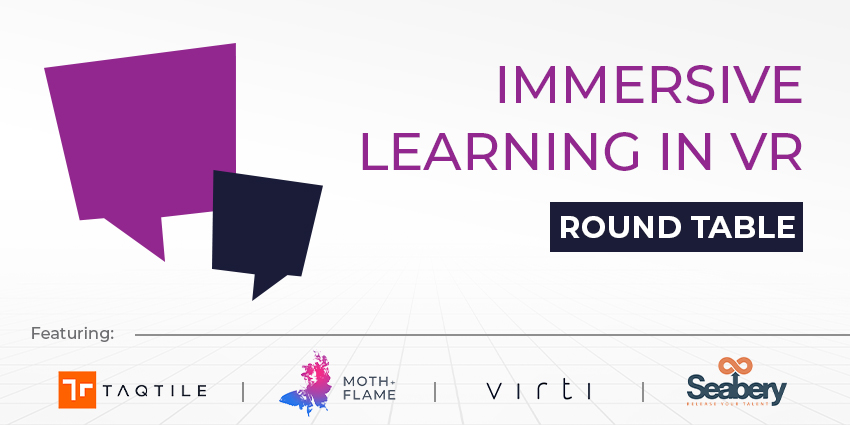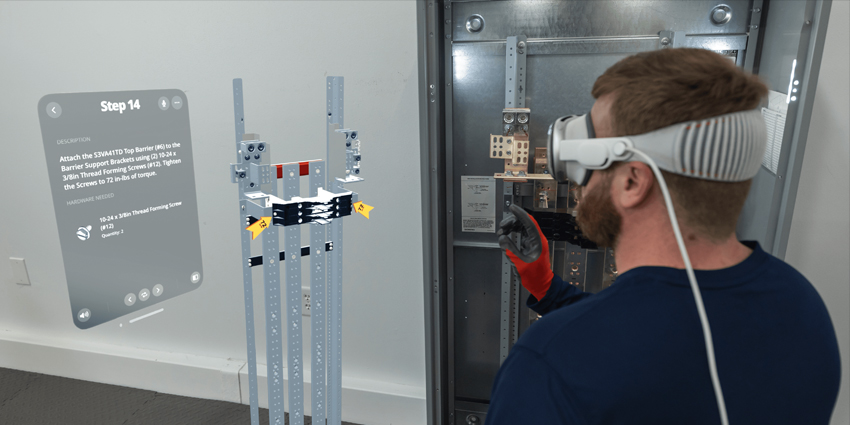Immersive learning has become a staple of the extended reality (XR) industry, namely as companies and organisations scramble for training solutions amid the ongoing COVID-19 pandemic, which has rocked the foundation of many business supply chains, travels, and operations.
However, the benefits of using immersive learning platforms have revealed highy optimistic results, with many VR firms and businesses reporting higher levels of engagement and information retention rates among trainees, as well as lucrative cost savings and agile deployment capabilities within industries.
Across businesses and consumers, learners and educators, new industry leaders and the future people they serve, immersive learning is transforming instructional methods across numerous landscapes.
XR Today has detailed significant progress among firms such as WS Darley, Motive.io, Lenovo, BISim, Credersi, DAM Health, and many others as they pioneer XR training tools for the new workforce.
For our XR Today round table, we are pleased to welcome:
- Dirck Schou, Chief Executive and Co-Founder of Taqtile
- Kevin Cornish, Founder of Moth+Flame
- Alex Young, Founder and Chief Executive of Virti
- Antonio Fernandez, EMEA Business Development Director of Seabery
Our panellists have discussed the value of XR in the training and education industry, the cost effectiveness of XR solutions compared to traditional instructional methods, and the potential of such tools in the coming years.
How have XR solutions accelerated and refined training processes, and how easily has your company been able to deliver to educational institutions?
Dirck Schou: Our Manifest work instruction platform is the epitome of intuitive. We’re democratizing expertise by essentially making everyone an expert through the delivery of knowledge in ways that empower frontline workers to do their jobs.
Both younger generations of trainees and experienced veterans are quick to embrace the Manifest augmented reality (AR) platform, accelerating the training and ongoing learning processes.
Creating expert content is exceptionally efficient on Manifest, and the ability to access and put that knowledge to work at the equipment site is easier than ever before. We are in the process of partnering with a number of organizations that are training the next generation of frontline workers.”
Kevin Cornish: We have expanded Moth+Flame into the enterprise training space because we wanted to use the technology and platforms to develop solutions for workplace challenges that can’t be solved with Powerpoint or traditional training solutions.

To that end, we have managed to efficiently deliver VR trainers to both the private and public sectors, across institutions like the US Air Force and Accenture, which have covered areas such as sexual assault prevention, racial bias, suicide prevention, and hard skills trainings.
Each training module captures users’ responses as they navigate each scenario in one holistic dashboard, allowing agencies and organizations to monitor trends, performance, and empower data-driven management decisions.
We are currently in talks with an institution of higher education to determine the strong viability of creating a Diversity, Equity, and Inclusion (DEI) trainer for faculty members and students within a classroom setting, and I believe that it will be incredibly impactful.
Alex Young: The experiential learning provided by XR has been transformative for training processes, especially during the global shift to remote working throughout the pandemic. By immersing staff or students in a simulated environment, realistic, practical training can be delivered safely and remotely.
Progress can also be reliably and accurately tracked, and unique AI-driven data points analysed to monitor performance. XR ultimately presents a more holistic, intuitive and interactive training experience compared to traditional lectures, classes or online alternatives.
At Virti, we’ve witnessed a rise in the adoption of XR tech from educational institutions and employers. Initially, the remote working necessitated by the pandemic drove demand for effective virtual training, which allowed students and employees to continue learning from home without sacrificing the benefits of in-person training. Now, organisations are continuing to embrace XR and incorporating it into post-pandemic strategies, taking advantage of the cost-savings, ROI and performance analysis it provides.
Antonio Fernandez: The traditional way to train skills has been the combination of theoretical contents with practices. However, with certain skills, this methodology can be incredibly inefficient in different aspects related to safety, time consumption, a high number of consumables, and adverse impact on the environment, among others.

XR allows firms to digitalize a substantial part of practical training so that students can immerse into simulated experiences. This digitalization translates into a more efficient and higher-quality training experience as students will be able to train faster, safer, with a lower consumables’ intake, and with a lower impact on the environment.
Delivering this type of technology to educational institutions comes with challenges, as there is usually an additional financial requirement typically supplied by the Government or by industry.
Technology alone is also ineffective as it must be integrated into the training methodology. There is a need to update the trainer’s knowledge, so a proper train-the-trainers service is also required.
Have you noticed any cost savings using VR training solutions, and how do they compare to traditional methods?
Dirck Schou: Customers implementing our Manifest AR work instruction platform are reducing training times from weeks to mere days. Once trained, the accuracy of the work conducted by frontline staff is higher than through traditional classroom training methods, reducing the time it takes to resolve issues and minimizing equipment downtime.
When addressing complex issues in the field, traditional paper-based knowledge is often unavailable and difficult to put to use, whereas the Manifest AR platform can access text, audio, and video instruction, and even allow frontline workers to communicate with remote experts to guide them through complex procedures.
Kevin Cornish: VR presents an incredible opportunity to revolutionize the way we train in terms of cost savings. This is clearly a big attraction for any enterprise, and is a lead conversation driver when we’re talking with potential customers. Not booking travel and physical event spaces is a benefit of VR training, and almost all businesses have now been confronted with this dynamic.
There are now many studies that prove VR’s ability to cut costs, including a 2020 PwC study that shows that VR is 10x more cost effective than traditional methods.
But cost savings doesn’t mean much if the training isn’t effective. From a learning comprehension perspective, there is a dramatic difference in how your brain processes and responds to being immersed in a situation versus passively viewing a Powerpoint. VR brings the power of highly interactive, one-on-one roleplay to a nationwide enterprise.
Alex Young: XR is an extremely cost-effective training solution. For learners, the expense of travel is removed, widening access to participation. Educators and employers gain the ability to create and customise educational content at scale, without incurring the costs associated with hiring external course leaders, ordering physical resources or investing in individual training courses.

With platforms like Virti’s, versatile, scalable content can be created and stored all in one place, and supplemented with the analysis of bespoke AI-driven feedback to help progress learner development.
Gone are the days when practical training required extensive resources or sessions were delivered as a one-off event dependent on the availability of an external educator. XR platforms provide training courses that are infinitely scalable, repeatable and integrative. Ultimately, they’re a gift that keeps on giving.
Antonio Fernandez: Definitely, yes. I would disagree that training should be fully replaced by technology at this stage, at least with the current state-of-art solutions, but the higher proportion of the training time that can be delivered via XR, the greater efficiencies we will experience.
For instance, in the specific case of training a welder using AR, we have seen cost savings of more than 60 percent compared to traditional methods. The main reason for this is because training is much faster, since simulation will allow the student to repeat a specific process and gain muscle memory without having to spend time on unproductive tasks such as materials preparation, maintenance, and others.
Furthermore, VR will not require the use of steel or welding consumables, so the variable cost of welding becomes zero in simulation.
Based on your current experiences in eLearning, which trends do you see taking place in 2022? Will there be an expansion or contraction on the adoption of eLearning, and which factors will contribute to this?
Dirck Schou: For decades, office workers have reaped the benefits of new technologies while deskless workers – representing 80 percent of the global workforce – have never been given the opportunity to take advantage of digital tools.

AR work instruction platforms like Manifest will finally deliver the power and benefits of technology to the long-underserved frontline worker. In 2022, we expect a growing number of organizations to equip frontline workers with this transformational technology.
As they gain access to highly-specialized knowledge and step-by-step instructions that can be put to use in their operating environment, workers will be able to do their jobs more accurately, efficiently and safely. Meanwhile, organizations will become more flexible and resilient by empowering their workers.
Kevin Cornish: Remote solutions are here to stay. It just makes so much sense for a number of use cases. We have clients that send our tech home with their employees so they can train at their own pace.
There will definitely be an expansion in e-learning and VR-based training in 2022 and beyond. Businesses need effective solutions for training their workforce and the devices we use for VR now will only become cheaper and lighter, lessening current barriers.
Industries like healthcare, education, entertainment, tourism, and retail are critical to our daily lives and will continue to explore the different ways to tap into VR technology on-location.
For example, the education sector is one of the most affected by the COVID-19 pandemic, so the use of VR can accelerate learning as it can help students experience their lessons through their own eyes without the need for face-to-face classroom learning.
Alex Young: Innovation within XR and eLearning is moving faster than ever, and we certainly don’t see it slowing down! As organisations emerge from the pandemic, immersive training is being integrated into standard operational practices and post-pandemic planning. It will undoubtedly become a gold-standard for sector leaders by 2030.
As hardware and technology advance, the quality of data we’re able to collect and transform into training insights will also accelerate. Solutions will grow to match rising demand over the next year and beyond, and this expansion is by no means restricted to traditional, role-specific training, either.
At Virti, we’re already seeing our technology deliver immersive mindfulness, mental health and leadership training, but most importantly, these solutions could truly democratise global access to knowledge. As internet connectivity expands and improves, and our ways of working evolve, we hope that e-Learning, immersive, and data-driven training solutions will become accessible to every person on the planet.
Antonio Fernandez: In 2020, we have seen how schools were forced to move a good part of their training online, and the obvious solution was eLearning. This experience has demonstrated the benefits of this technology, so I definitely believe the adoption of this and other educational technologies will continue.
Schools have seen that they can make a more efficient use of their infrastructure and facilities when they organize better, and eLearning plays an important role here.
A key factor is to ensure that both training contents and methodologies are properly digitalized, since, as mentioned before, technology alone is ineffective. Education providers need to ensure that technology is properly integrated into processes, which requires good course planning and redefinition.
Furthermore, related technologies such as practical simulators become even more attractive when they can communicate to an eLearning platform, since it allows educators and students to remain connected, even for the practical side of the training.







